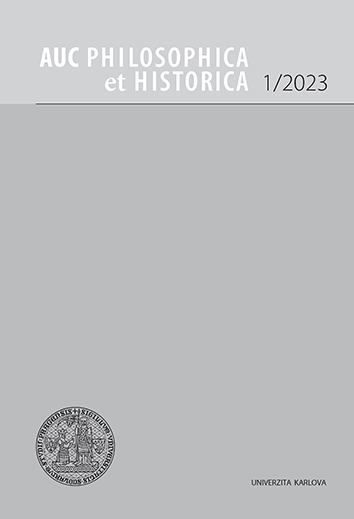AUC Philosophica et Historica (Acta Universitatis Carolinae Philosophica et Historica) is a multidisciplinary academic journal focused on the humanities with more than 50 years of tradition.
The journal is indexed in CEEOL, DOAJ, and EBSCO.
AUC PHILOSOPHICA ET HISTORICA, Vol 2016 No 1 (2016), 37–94
Sváteční Kristus
[The Sunday Christ]
Josef Záruba-Pfeffermann
DOI: https://doi.org/10.14712/24647055.2016.21
published online: 26. 09. 2017
abstract
The Sunday Christ, or the “Saint Sunday” as the medieval texts call this depiction, is surviving as a wall painting in about ninety European parish churches until today, with oldest examples from round 1350. The image was banned by both: the Reformation and the Catholic Church in the 16th century. The image was researched in several studies since the beginning of the 20th century. The aim of this article is to approach these images in relationship to the general features of the Eucharistic devotion showing its function as a Mahnbild, Andachtsbild and as an epitaph. The relationship to medieval texts of the Sunday letter, Visio Pauli and the mystical visions of Archbishop John of Jenstein seems to vary with time and place. With help of various motives and the social context, I try to argue these images had a certain revolutionary potential, relating workers directly to Christ himself. Finally, I focus on the end of this particular medieval devotional image in the sixteenth century, mentioning the art related to criticism of this image. I argue that two famous works of the Flemish painting are related to the topic of the Sunday Christ: the work of the “Proverbs” by Pieter Bruegel and the Haywain triptych by Hieronymus Bosch.
keywords: medieval wall paintings; parish church; devotional image; christian iconography; Sunday Christ; popular piety; Passion Christ; the Sunday Letter; Arma Christi; medieval vision
periodicity: 2 x per year
ISSN: 0567-8293
E-ISSN: 2464-7055
